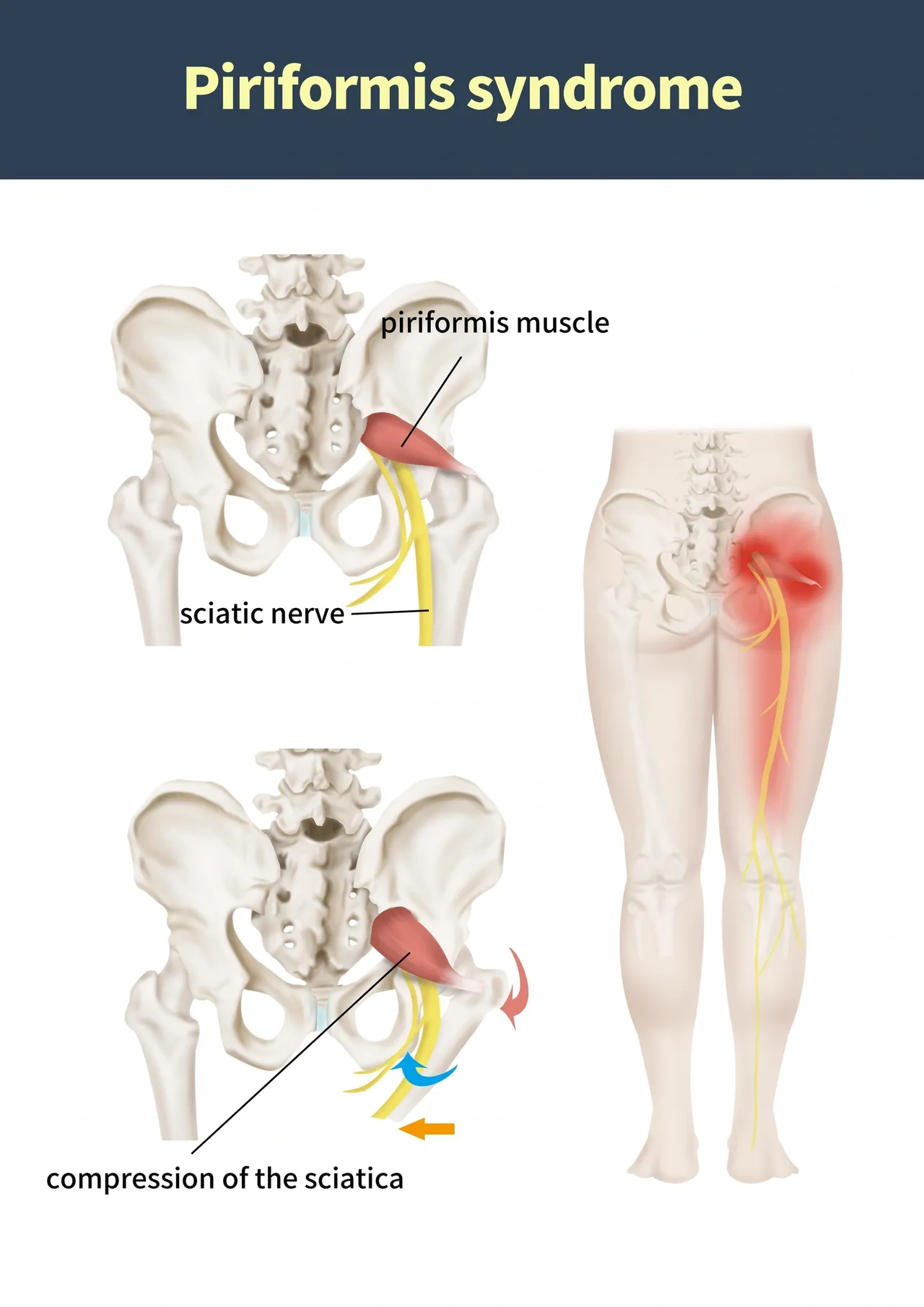Piriformis Syndrome: Causes, Symptoms, and Treatment
Piriformis syndrome is a condition that occurs when the piriformis muscle, located in the buttocks, compresses or irritates the sciatic nerve. This can cause pain, tingling, and numbness in the buttocks and down the back of the leg. In this blog post, we’ll take a closer look at the causes, symptoms, and treatment options for piriformis syndrome.
Causes of Piriformis Syndrome
The exact cause of piriformis syndrome is not always clear. However, some common causes include:
- Overuse of the piriformis muscle: This can occur with activities that involve repetitive motion or sitting for long periods of time.
- Trauma: A fall or other type of trauma to the buttocks can cause the piriformis muscle to compress or irritate the sciatic nerve.
- Anatomical abnormalities: In some cases, people may have an abnormality in the shape or position of the piriformis muscle or sciatic nerve that increases their risk of developing piriformis syndrome.
Symptoms of Piriformis Syndrome
The symptoms of piriformis syndrome can vary from person to person. Some common symptoms include:
- Pain in the buttocks: This pain may be sharp or dull and may be felt on one or both sides of the buttocks.
- Pain down the back of the leg: This pain may be felt in the back of the thigh, calf, or foot and may be accompanied by tingling or numbness.
- Pain with sitting: People with piriformis syndrome may experience pain or discomfort when sitting for long periods of time.
- Pain with certain activities: Activities that involve running, walking, or climbing stairs may worsen the pain associated with piriformis syndrome.
Treatment Options for Piriformis Syndrome
Treatment options for piriformis syndrome may vary depending on the severity of the symptoms and underlying causes of the condition. Some common treatment options include:
- Rest and activity modification: In some cases, resting the affected area and modifying activities that worsen symptoms may be enough to alleviate pain and discomfort.
- Physical therapy: Physical therapy may be used to stretch and strengthen the piriformis muscle and other muscles in the affected area.
- Massage therapy: Massage therapy may be used to alleviate pain and tension in the piriformis muscle and surrounding areas.
- Medications: Nonsteroidal anti-inflammatory drugs (NSAIDs) may be used to reduce pain and inflammation associated with piriformis syndrome.
- Injections: In some cases, injections of corticosteroids or a local anesthetic may be used to alleviate pain and inflammation in the affected area.
- Surgery: Surgery is generally considered a last resort for people with piriformis syndrome and may be necessary in cases where conservative treatments have failed.
Conclusion
Piriformis syndrome can be a painful and debilitating condition, but there are many treatment options available to alleviate symptoms and improve quality of life. If you are experiencing pain, tingling, or numbness in the buttocks or down the back of the leg, talk to a healthcare provider about whether piriformis syndrome may be the cause and what treatment options may be appropriate for you. With the right treatment, most people with piriformis syndrome are able to return to their normal activities and enjoy a pain-free life.
Thank you for checking out the Articles from OrMobility Physical Therapy & Performance. We are Douglas County’s highest rated physical therapy clinic. We are now serving the Roseburg, Sutherlin, Green, and to Winchester. Call us today to schedule your initial evaluation. Now, continue reading to learn more…


